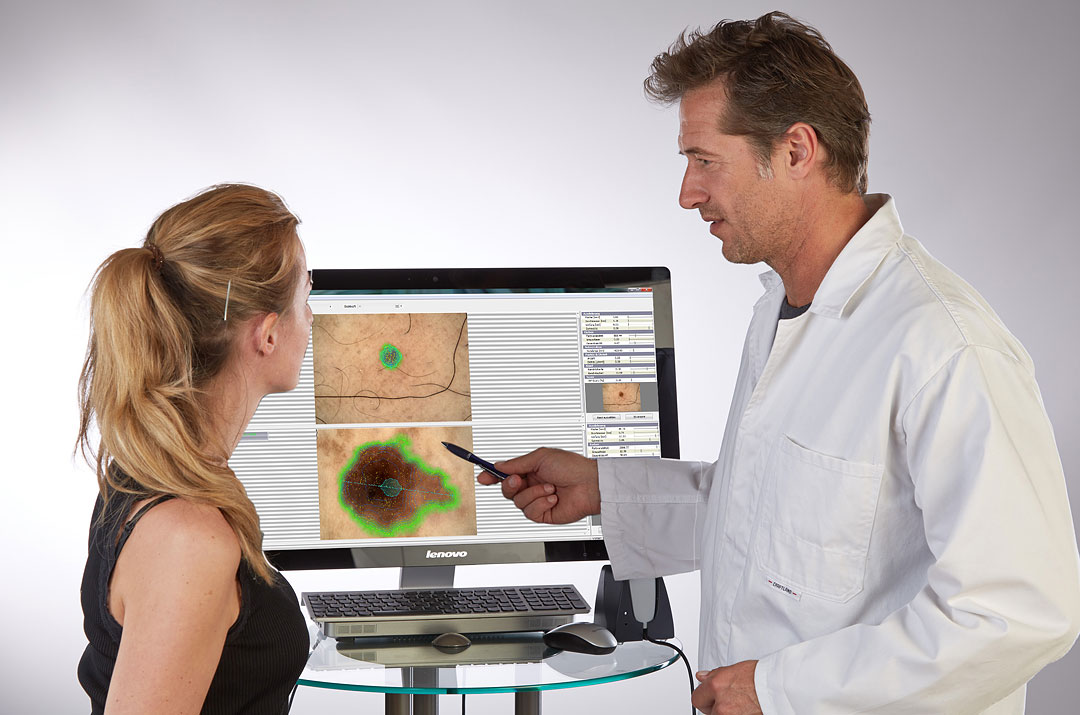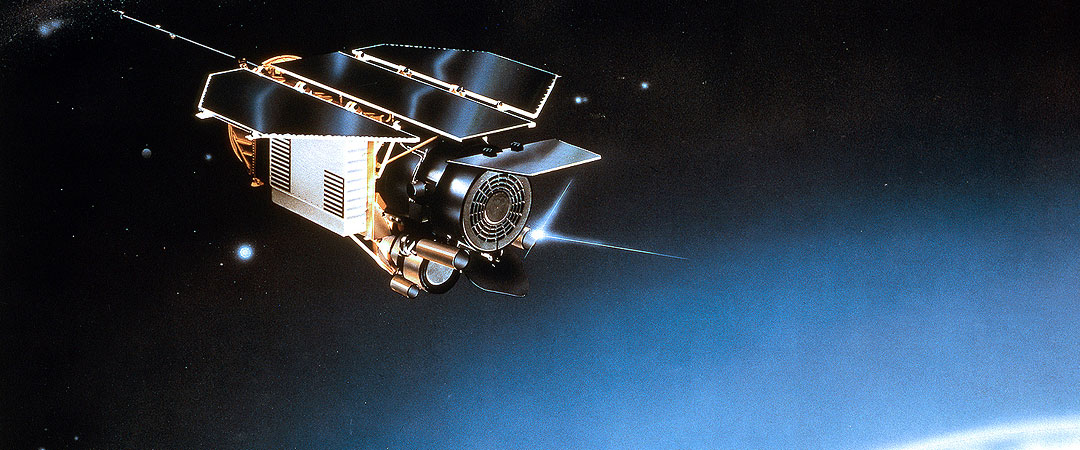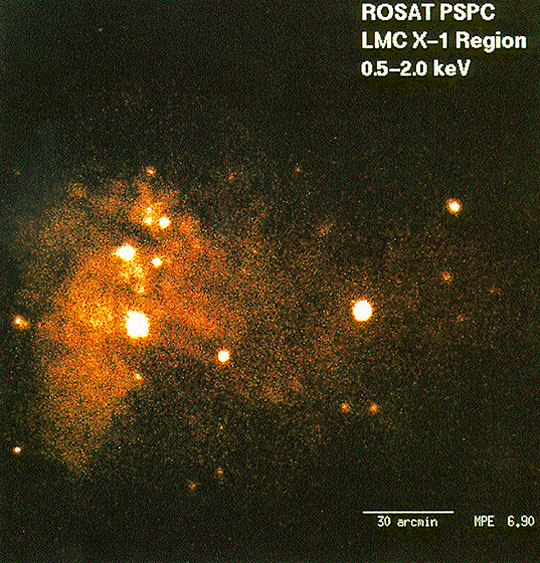From black holes
to black spots
Improved early diagnosis of skin cancer by means of image analysis from space flight
Sunbathing? All well and good. Sunburns, however, especially in childhood, enormously increase the risk of getting skin cancer. From sunburns, moles and birthmarks emerge that may proliferate. That is the black skin cancer, the “malignant melanoma” – and the commonest fatal skin disease.
Early diagnosis helps. If a tumour is detected before its size reaches 4 millimetres, there are good chances for a full recovery.

© DermoScan GmbH

DermoGenius, for example, increases the rate of early diagnosis from 75 per cent to 90 per cent – automatically – by using a software inspired by that used in the ROSAT X-ray satellite mission. In this mission, pictures of space were automatically searched for supernovas – which means a recognition of known patterns. With skin cancer detection, too, specific patterns have to be recognised, and a software would be an ideal support for dermatologists.
And this is how it works: the skin area is captured by a special camera, and the software evaluates the image following the ABCD rule. The software compares the birthmark to similar cases and classifies it. What is so special about it: DermoGenius “memorises” suspicious birthmarks and precisely depicts any change in the next examination.

ABCD: that’s how birthmarks are categorised.
A: Is the spot asymmetric, i.e. oval instead of round?
B: Border – is the border blurred?
C: Colour – is the spot multi-coloured?
D: Diameter or differential structures, respectively – is the diameter larger than five millimetres?
© Wikipedia/National Cancer Institute

From space flight to the dermatologist
The German X-ray satellite ROSAT took images of all X-ray sources in outer space. During its eight years of service, reams and reams of data were collected – images showing X-ray sources, partly pixelated, partly “noisy”, and partly superimposed by background radiation. No surprise, since the objects to be photographed were partly 50 million light years away.

© Max Planck Institute for Extraterrestrial Physics

An image taken by ROSAT as an example: the Large Magellanic Cloud at a distance of 170,000 light years. 15 unknown X-ray sources could be found. However, when the entire outer space is photographed, human image evaluation simply can’t keep up with the task anymore.
For the evaluation of the image data, the Max Planck Institute for Extraterrestrial Physics in Garching developed a mathematical evaluation method. It allowed for working out point sources and complex structures out of noisy images.
© Max Planck Institute for Extraterrestrial Physics
The image analysis process analyses the pixels, connects the dots and is capable of classifying on its own whether a group of pixels is nothing, noise, a source of disturbance, or, for example, a remnant of a hitherto unknown supernova.
Thanks to these algorithms, more than 120,000 new sources of X-radiation could be identified in outer space: neutron stars, galaxies, and comets. Prior to ROSAT, only
840 sources were known.
About the analysis
of irregular spots
Supernova or melanoma? There is hardly any difference in these to an algorithm. Inspired by the ROSAT software, MELDOQ, a procedure for early diagnosis of black skin cancer, was developed at the same Max Planck Institute – by another team – in cooperation with Regensburg University and Rodenstock.

From left to right: © NASA, 2. & 3. © Datinf GmbH, Tuebingen, 2014
Shown in the picture on the left: the visualisation of a ROSAT picture of a galaxy cluster –
with optical similarities to a melanoma.
MELDOQ is based on digital image analysis in connection with dermatoscopy. With the help of the Scaling Index Method (SIM), the system is capable of detecting both finest colour nuances and characteristic patterns associated with the growth of the malignant cells.
From the MELDOQ project, the Regensburg company Dermoscan emerged, which produces and distributes products for early diagnosis of skin cancer.